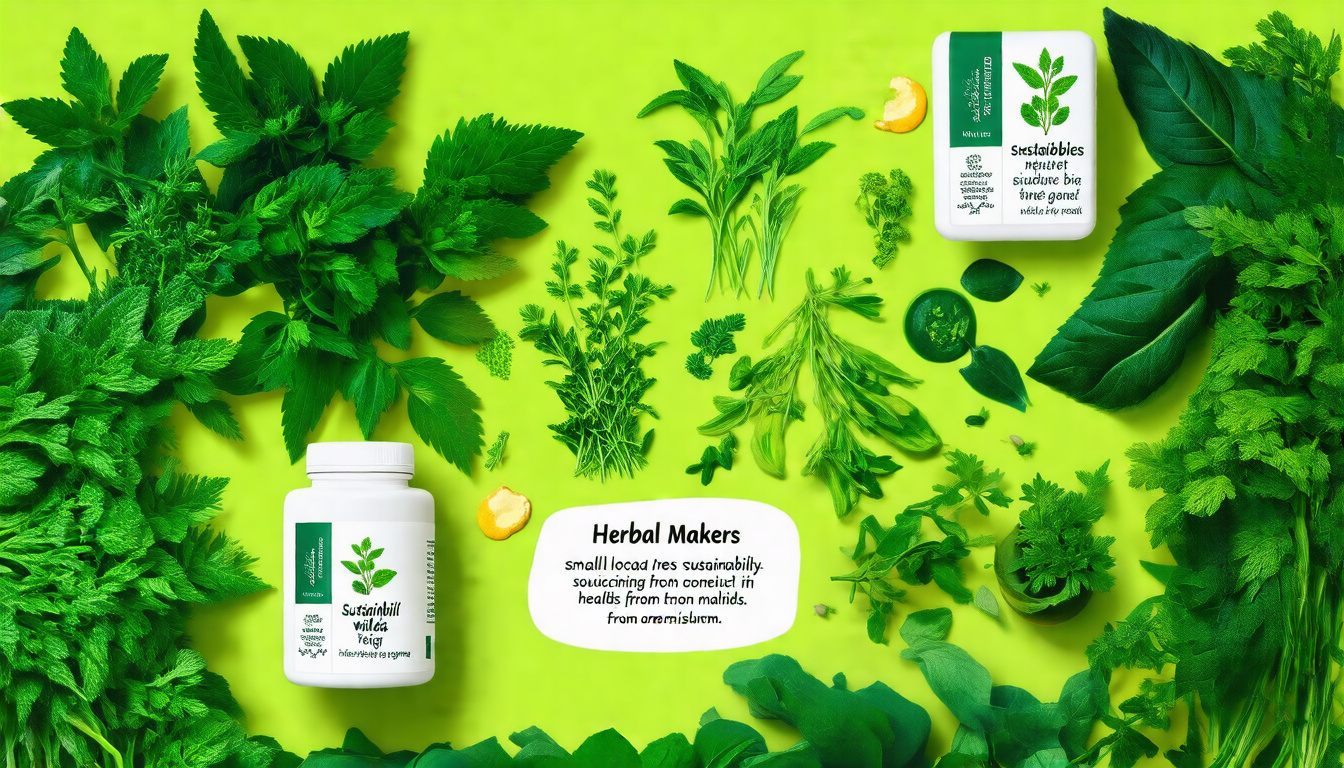
Unlocking Nature's Potential: The Ultimate Guide to Sustainable Sourcing of Herbal Products
Share
Introduction
Herbal products have been used for centuries because they help with health and healing. Global demand for these plants grows every year. How we collect these plants affects their strength, the health of nature, and the lives of many people. Sourcing herbs in a careful way shows respect for nature. It keeps plant life safe, supports fair trade, and protects herbal medicines for those who come later. This guide sets out the ideas, tests, and best ways to source herbs sustainably.

Understanding Sustainable Sourcing in Herbal Products
Sourcing herbs is not just about taking raw materials. It is a full approach that keeps nature, people, and money in balance. Every part of the chain matters. Farmers grow, pick, process, and deliver the herbs while keeping plant groups safe and local work fair.
Key points are:
• Keeping nature in its limits so that plants stay diverse
• Working with fair trade and sharing work benefits
• Growing plants by methods that help the earth
• Keeping the chain clear so each step is seen
Guarding Nature: Protecting Plant Life and Wild Areas
Many healing plants grow in wild spots that need care. Picking too much can lower plant numbers. Experts use lists like those from IUCN and CITES. These lists help to spot plants that may be in risk.
Sustainable sourcing means:
• Not taking much from plants that are at risk unless safe plans exist
• Using careful picking methods. For example, taking only a part of a group of plants, using parts of the plant to grow more, and watching plant groups over time
• Backing groups that check wild herbs by rules that keep nature and people safe
Sustainable Farming and Regenerative Practices
Growing herbs in farms can ease the strain on wild plants. Smart farming uses methods that keep soil and nature strong. These farms mix science with care for the land.
Best ways include:
• Using farming steps like light soil work, switching crops, grouping plants that help each other, and leaving parts of the land in its natural state
• Saving seeds and keeping long-lasting plants to hold on to the range of plant genes
• Working closely with growers to keep the process open and to improve steps over time
Shorter and Clear Supply Chains: Keeping Quality and Sustainability
The strength of an herb comes from how it is grown, picked, and treated. Long and mixed chains often cause loss of quality, risks of mix-ups, or contamination. Long storage in poor spots can cut down on healing parts and add wrong items.
To solve this, careful sourcing tries to:
• Keep the chain short and under one team so each step stays in view
• Make visits to farms and picking sites to see and check the work
• Use marks like organic or fair trade to give buyers a safe choice
• Invest in teaching and teaming to keep the chain clear and lower bad practices
Social Responsibility and Fair Trade
Sourcing herbs well also means care for people. Wild picking and herb farming back many small and local bodies. Fair trade makes sure that these people get fair pay, safe workplaces, and a steady future without harming nature.
Key points include:
• Fair rates and agreements that give work people steady money
• Backing projects where locals guard and care for nature
• Keeping picking in line with local ways and old knowledge
• Letting local teams join in making choices about plant care
Geo-Authenticity and Herb Strength
In some traditions, especially in Chinese practices, the place where an herb grows matters. Soil, climate, and height help set the herb’s mix of chemicals and its power. This careful way respects the link between the herb and its home.
Sustainable sourcing here means:
• Choosing herbs that grow in their natural areas
• Keeping whole areas safe so that herbs stay strong
• Not mixing herbs or using the wrong materials that cut the herb’s power
Consumer Thoughts and Taking Steps
Those who buy herbs help push good sourcing practices with each choice they make. It can be hard to see every step in the chain, but buyers can look for:
• Marks like organic, FairWild, or fair trade that tell a story of safe steps
• Brands that share clear steps from field to shop
• Products from farms that care for the land or nature in wild picks
• Small or local makers who keep closer ties with growers
Conclusion
Sourcing herbal products in a careful way brings together nature care, fairness for people, and strong herbs. By choosing methods that keep wild groups safe, support fair growing and trade, and keep the chain clear, the herb industry can unlock nature’s power with respect. When buyers, healers, and makers choose good steps, herbal care will keep history, health, and the earth safe together.
